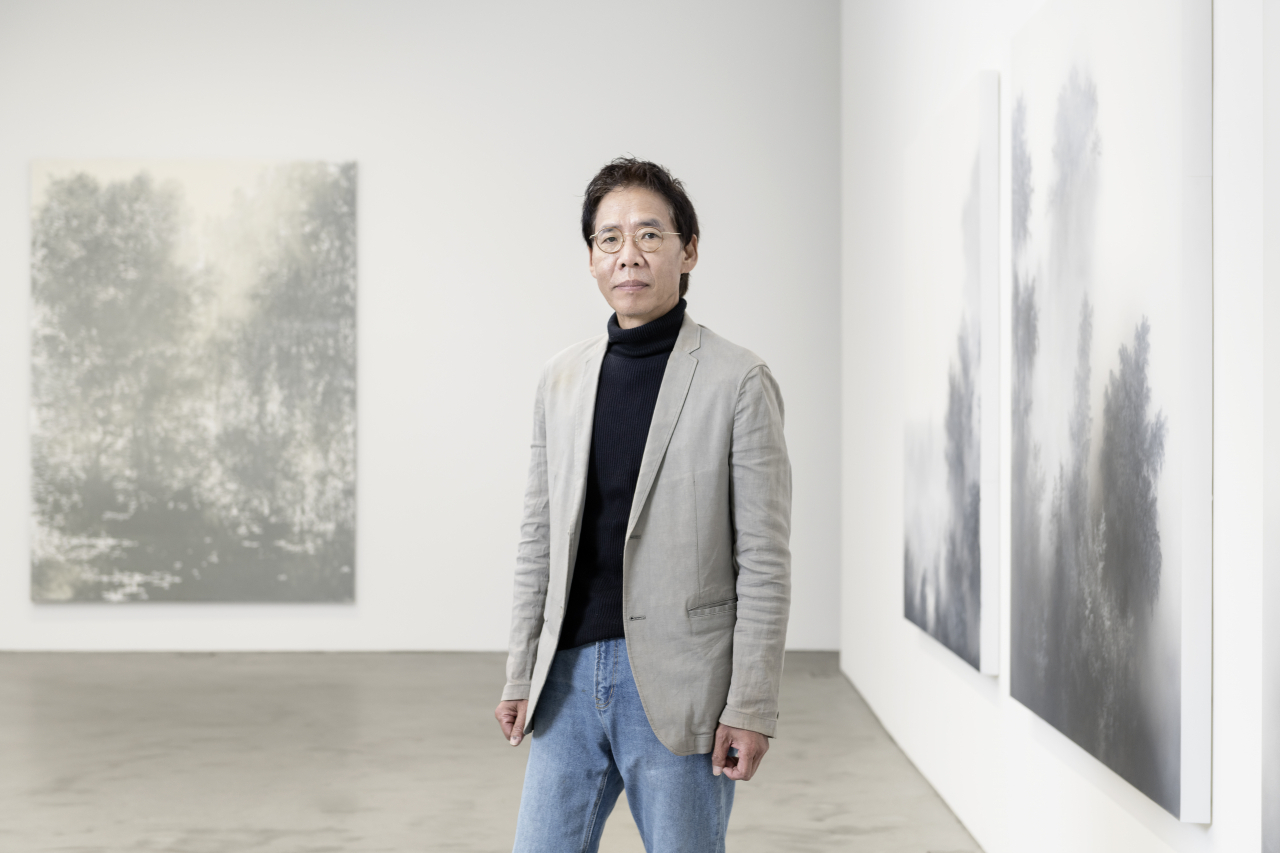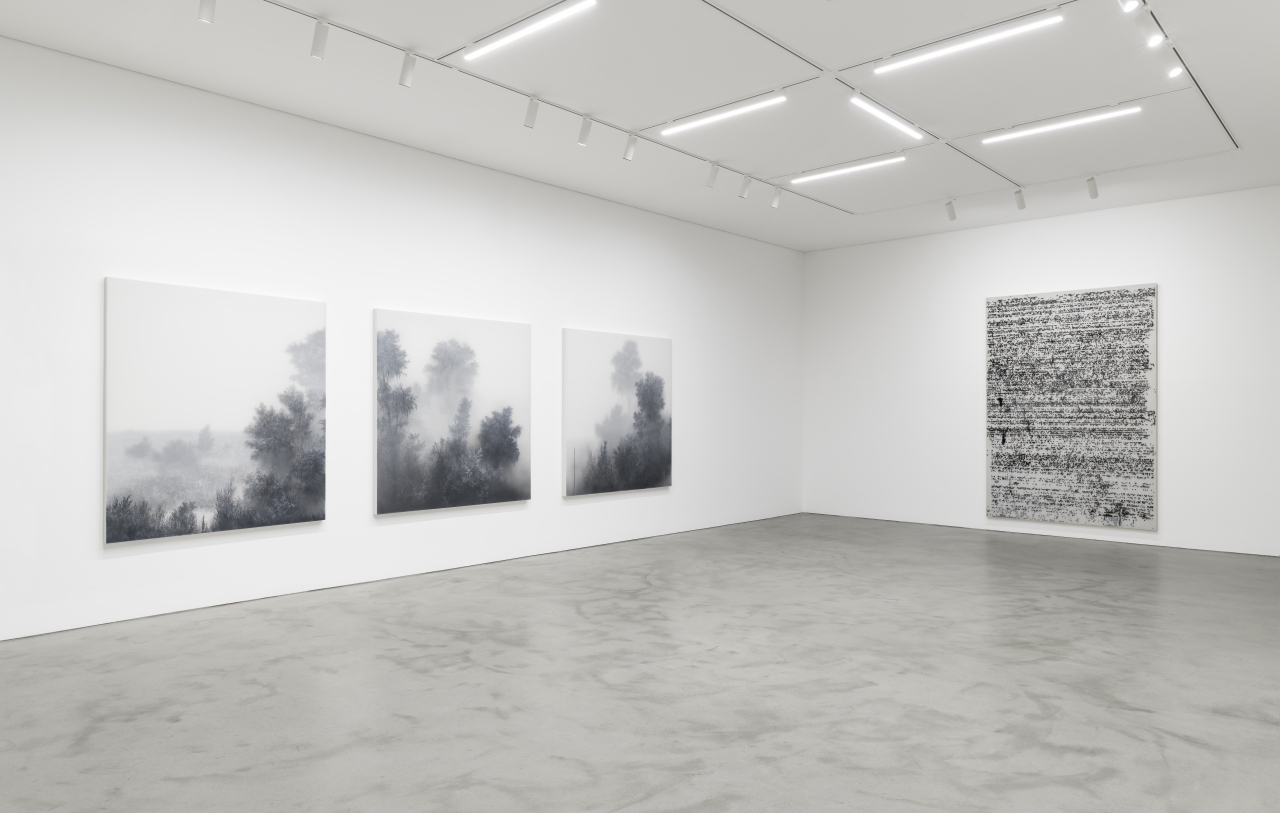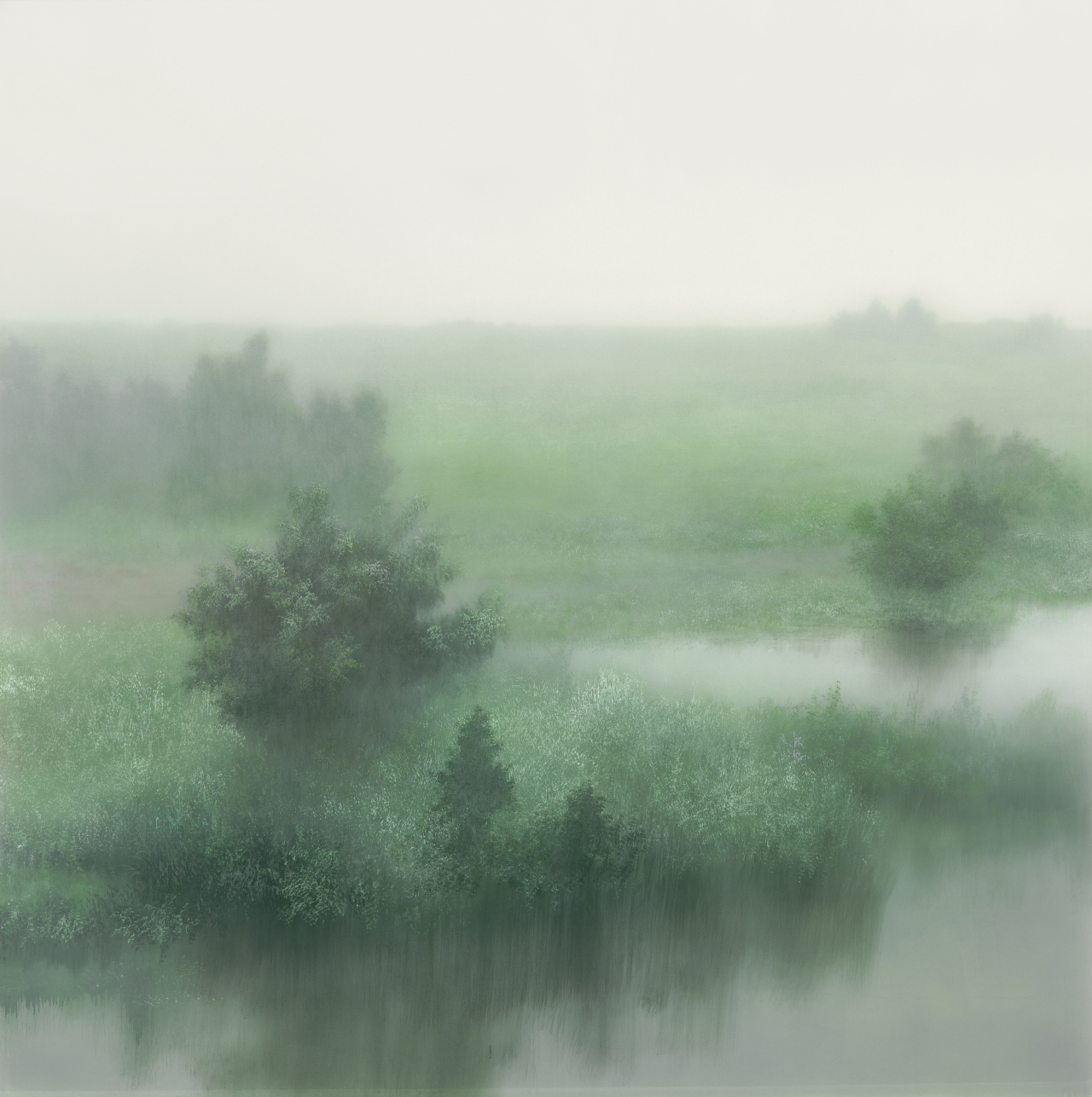 |
Rhee Ki-bong (Kukje Gallery) |
Artists reveal what they hold inside -- something deeply hidden in their minds -- through their work. From a distance, Rhee Ki-bong’s landscape paintings appear misty, like dreamy scenery.
“Art is to bring out things from one’s unconscious. It is often said ‘to create’ things, but it is -- in fact -- ‘to reveal.’ To reveal is not as easy as it may sound; one may need to have many experiences in life and most of all, a strong will to persevere as an artist,” Rhee said in an interview with The Korea Herald on Nov. 22 at Kukje Gallery in Seoul.
“Sometimes an artist may get too exhausted to keep the will alive, but there is a great pleasure when you bring out things from within yourself,” he said.
 |
An installation view of “Where You Stand” at Kukje Gallery in Seoul (Kukje Gallery) |
To reveal or express their subconscious is not all there is. The artist's works need to convey one's own view of the world -- like the apple paintings by French artist Paul Cezanne, Rhee said.
Rejecting a realistic approach to painting, Cezanne distorted objects to create multiple perspectives. His approach to painting apples became a seed for cubism.
Rhee, 65, came back to the Kukje Gallery with his fifth exhibition there, and his first since 2008. “Where You Stand” is now taking place at the gallery’s venues in Seoul and Busan, where some 50 of his works are on display.
Entering the first exhibition hall of the Seoul gallery, visitors are greeted by paintings of misty green forests. Rhee paints directly on plexiglass or polyester fiber, and then lays the translucent sheets onto another layer of painted canvas.
 |
“Where You Stand Green-1” by Rhee Ki-bong (Kukje Gallery) |
Rhee has been attracted to fog and water as motifs in his paintings. At the exhibition in 2003 at Kukje Gallery, “There is No Place -- The Connective,” the artist presented a water tank filled with blue liquid, from which his interest gradually evolved into fog and vapor.
The artist chose the words “phantom” or “abyss” in explaining his works at the exhibition and said the concept is underpins the paintings.
“I wanted to explore the concept of ‘phantom’ throughout my work, and I have thought for a long time about 'psychological fear' that we have deep in our minds -- like an abyss. I think we have an abyss hidden in ourselves. Sometimes we wanted to explore the world but we are afraid to do so at the same time,” he said.
Rhee said he explores the abyss in his art, but not seriously. The polyester fiber layered in his paintings seems like a surface to the entrance to an unknown world. He raised his index finger. “It is not like I want to walk into the abyss, but simply want to touch its surface,” he said.
In his eyes, the world seems like a soft machine that consists of numerous fragments -- and the artist’s job is to examine practices and arrange them. He referred to the act as “playing with those fragments.” Rhee said sometimes it feels like he is a “digital circuit designer” rather than a painter.
“The world looks like a very complicated digital circuit to me, and sometimes I feel like I am imitating the world in my art,” he said.
Some may question why people have a desire to see works of art in person or why one would need to go to a gallery or a museum. The artist had a clear explanation and talked about it without hesitation -- it serves a purpose to help open the door to the room of art given to everyone at birth.
“We all were born with a room. Some may have locked it or neglected it for a long time without taking care of it. As an artist, I hand over a key to unlock the room through my art, saying ‘Why don’t you visit the room? It is really good,’” he said.
By Park Yuna (yunapark@heraldcorp.com)






![[Today’s K-pop] Blackpink’s Jennie, Lisa invited to Coachella as solo acts](http://res.heraldm.com/phpwas/restmb_idxmake.php?idx=644&simg=/content/image/2024/11/21/20241121050099_0.jpg)
